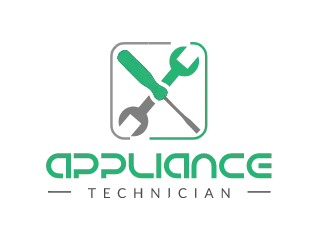Practical, technician-level advice for Ottawa–Gatineau homeowners on choosing, maintaining, and fixing big-ticket appliances—without wasting money.
Whether you’re finishing a new build or renovating an older home, you’ll eventually buy, maintain, or repair major home appliances. Even reliable products need care. Skip routine checks and you’ll pay for it later: higher hydro bills, surprise breakdowns, and premature replacements.
This guide gives Ottawa–Gatineau homeowners clear, field-tested advice on the big five—refrigerators, washers, dishwashers, dryers, and stoves/ranges—plus a blunt repair-vs-replace rule, a numbered maintenance checklist, and a mini decision table.
Des appareils électroménagers importants pour chaque maison

Réfrigérateur
Buy for storage, not hype. Adjustable shelves, deep door bins, and easy-clean glass beat flashy gimmicks. If space is tight, choose counter-depth or slimmer widths and confirm out-of-box dimensions before ordering.
Energy really matters. Bottom-freezers typically use less energy than side-by-sides; top-freezers can be thriftier still. Ice/water features add convenience but can nudge usage up—balance benefits against cost. To compare models apples-to-apples, read the EnerGuide label; it lists annual kWh so you can estimate true operating cost. natural-resources.canada.ca
Common repair cues. Weak cooling, new odd noises, puddles under crisper drawers, or an icemaker that quits mid-cycle. Catching these early with a réparation de réfrigérateur à proximité visit almost always beats waiting for a full failure.
Quick upkeep checklist (fridge):
-
Vacuum condenser coils twice a year.
-
Keep 1–2 inches of ventilation clearance.
-
Replace water filters on schedule and check door-seal grip.
Washing Machine
What actually matters: capacity, spin speed (faster spin = less dryer time), water usage, and noise. Front-loaders usually save more water/energy than classic top-loaders; new HE top-loaders narrow the gap.
Heat only what you need. Models that heat just the required water volume cut bills and wear. Pair with a dryer that has moisture sensors to auto-stop when clothes are dry.
Common repair cues. No-spin (lid switch/lock), violent vibration (levelling/suspension), slow drain (filter/pump). If it repeats, book réparations de lave-linge à Ottawa et Gatineau—small fixes prevent drum/bearing carnage later.
Quick upkeep checklist (washer):
-
Level the machine and balance loads.
-
Clean the drain-pump filter (if accessible).
-
Run a monthly hot maintenance cycle to de-gunk seals and hoses.
Lave-vaisselle
Capacity first. Standard tubs fit ~12 place settings; tall-tub designs handle 14+ and big cookware. Compact 18″ units suit small kitchens and use less water.
Features that actually help: quiet operation, adjustable racks, bottle jets, a assainir cycle for baby items and boards, and soil-sensing “auto” for everyday loads. Steam helps with baked-on grime when you’d rather not pre-soak.
Common repair cues. Dirty dishes despite normal cycles (clogged filter/overload), standing water, or drain errors. If you’re repeating fixes, stop guessing and call réparation de lave-vaisselle à proximité.
Quick upkeep checklist (dishwasher):
-
Clean filter and spray arms monthly.
-
Scrape, don’t pre-rinse—modern detergents need some soil.
-
Run a hot cleaning cycle 1×/month.
Séchoir
Know your type:
-
Vented: fast dry times and simple maintenance (with proper ducting).
-
Condenser / Heat-pump: install almost anywhere; heat-pump is most efficient overall.
-
Stacking kits with a front-load washer save floor space.
Venting is everything. Long, crushed, or lint-choked ducts kill performance and spike bills—clean them at least yearly (more with pets).
Common repair cues. Longer dry times (lint duct clog), thumping/squeal (rollers/belt), or no heat (element/thermostat). If performance drops suddenly, book Réparation de sèche-linge à proximité.
Quick upkeep checklist (dryer):
-
Clear lint screen every load.
-
Deep-clean the vent run annually.
-
Don’t overstuff—airflow dries, not just heat.
Stove / Range
Your main options:
-
Induction: fast, precise, safer surface; needs compatible cookware.
-
Electric smooth-top: easy to wipe; avoid dragging pots—glass-ceramic scratches.
-
Electric coil: lowest cost, easy to service, looks utilitarian.
Safety & service tips. Match burner size to pan, keep pans flat for even heating, and don’t ignore cycling/uneven heat—diagnose before elements and switches fail fully.
Repair vs Replace — a quick rule (no fluff)
-
Réparation if the unit is under 8–10 years old ou the fix is < ~40% of replacement and parts are available.
-
Replace if older, repeatedly failing, unsafe, or clearly inefficient vs. current models.
-
Hidden cost check: add energy use (kWh on the EnerGuide label) to the math—cheap to buy can be expensive to run. natural-resources.canada.ca
Mini decision table (fast call):
| Situation | Likely Best Move |
|---|---|
| Under 8 years + <$400 fix on mid-range unit | Réparation |
| 10–15 years old + multiple symptoms | Replace |
| Part NLA (no longer available) | Replace |
| Old but premium model with cheap fix | Réparation |
| Uses far more energy than today’s models | Replace |
When to call a pro (and what to expect)
If symptoms are new, worsening, or electrical, stop DIY. Early diagnosis is cheaper than cascading failures. Same-day visits are often available across Barrhaven, Nepean, Kanata, Orléans, Gloucester et Gatineau.
Need a certified Ottawa technician today? Book online 24/7:
https://appliancetechnician.ca/book-appliance-repair-online/
Final word
Smart owners don’t gamble with big-ticket appliances. Measure properly, maintain routinely, read the EnerGuide label before buying, and call a pro before a minor fault becomes a major bill.
Q1. Fastest ways to cut appliance energy bills?
Clean fridge coils, clear dryer vents, run full washer/dishwasher loads, and keep ventilation clearance. When replacing, use the EnerGuide label to pick lower-kWh models; one efficient upgrade often pays back within a few seasons.
Q2. Most common sizing mistake when buying?
Not measuring out-of-box dimensions and delivery paths. Measure the final space, door swing, ventilation gaps, and every doorway/elevator on the route before ordering.
Q3. Is a new noise a red flag?
Yes. New or worsening noises usually mean wear in fans, pumps, rollers, or bearings. Early diagnosis prevents secondary failures that are far more expensive to fix.
